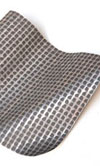Exhaust Materials
 There are a wide range of materials from which racing exhausts are made today and the choice depends largely on budget, although some of the very expensive materials available aren’t used because they either aren’t mature enough or engineers haven’t yet figured out how to use them.
There are a wide range of materials from which racing exhausts are made today and the choice depends largely on budget, although some of the very expensive materials available aren’t used because they either aren’t mature enough or engineers haven’t yet figured out how to use them.
Whilst there are a lot of exhaust systems still being made in steel, it isn’t as widely favoured as it once was for a number of reasons. The obvious one is that it corrodes very easily. Welding steel to stainless is a good way
to make the metal corrode even more swiftly than plain mild steel, and one motorcycle manufacturer discovered this very costly mistake on production motorcycles. If you are going to be welding different materials together, you should be sure of materials compatibility and corrosion beforehand.
Possibly the most common material choice for racing exhausts, although not in F1, is stainless steel. Austenitic stainless such as 304 is a popular choice for all manner of exhaust systems for everything from tuned road cars and motorcycles through club racing to Le Mans and beyond. This material has good corrosion resistance compared to mild steel, but is not so easy to work, owing to the rate of strain hardening. If there is very severe bending required, it may be necessary to stress-relieve the material by annealing part of the way through the forming process. There are other stainless materials used commercially such as 441 which is a ferritic grade which has a good degree of corrosion resistance coupled with greater formability than the austenitic grades. Austenitic grades of steel also suffer from galling, which is a micro-welding process where joints between similar or identical materials with sliding movement become cold-welded to each other with very little force applied, and this phenomenon is not limited to exhausts, or to stainless steel.
Titanium is very widely used for exhausts on motorcycles, although Formula One has largely shunned this material, and there is a good reason for this. In general, motorcycles support their exhausts with more than one support. Their pipes are obviously fixed to the engine at the cylinder head, but they also benefit from further supports either underneath the engine, or close to the end of the exhaust system, or possibly both. This largely mitigates the bending stresses which would be present if the extra supports weren’t used. The main advantage of titanium is its low density. With around 40% lower density than stainless steel, the advantages are obvious, especially for motorcycles. These exhausts are made from standard titanium materials, although some with increased high-temperature capabilities are available and have been tried in Formula One, although without success. In the same way that sportscar teams support their exhausts (especially those using turbocharged engines) to reduce the bending stress at the head, this technique could be employed to make titanium a realistic possibility for Formula One. Let’s not forget that the turbo Formula One engines used exhaust supports so there is a precedent for this measure. There seems to be little reason why a titanium tailpipe couldn’t be used, and perhaps some Formula One teams already do this.
Now we turn to Formula One, and the materials of choice here are the high-temperature ‘super-alloys’ containing lots of what we often hear called ‘strategic elements’. These elements which are used by the military and coincidentally are the ones that attract the ever-unpopular alloy surcharge, namely Nickel and Chromium. Inconel 625 is the popular choice, although there are some good alternatives available with potentially better performance, and certainly some teams already use these alternatives, with others looking at newer superalloy materials.
There is some evidence that non-metallic materials have been tried and tested for some exhaust components, although this seems to have been limited to small-scale testing in Formula One. There is no doubt that the material in question is impressive, and it seems to have a natural niche in aerospace and defence markets.
Written by Wayne Ward.